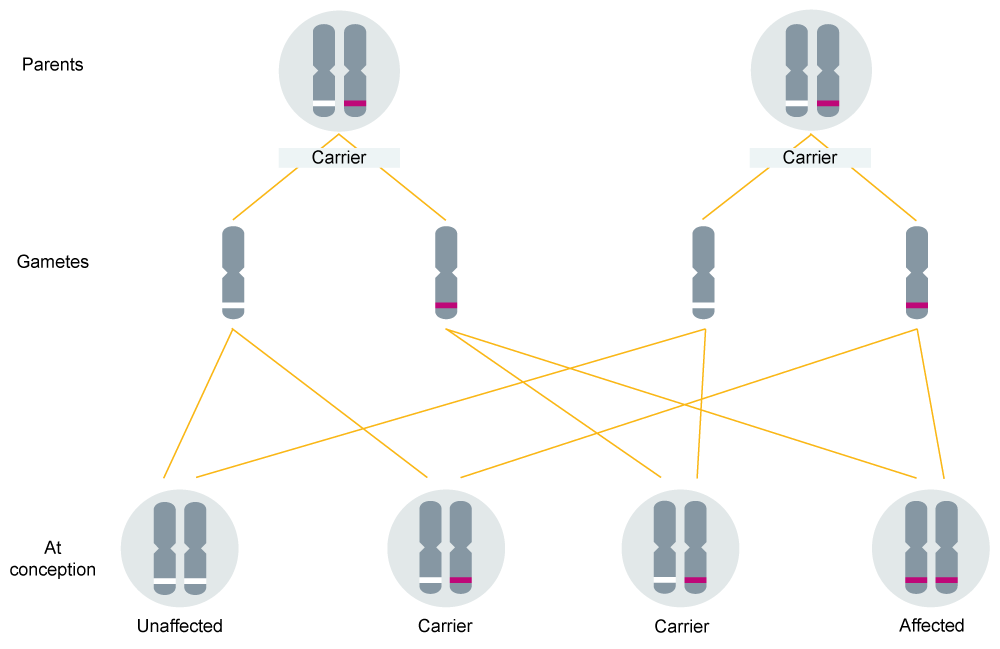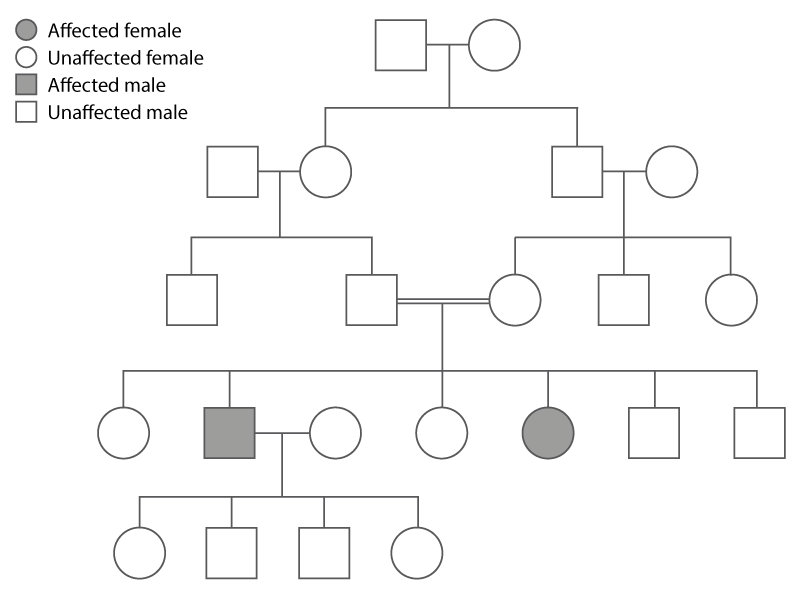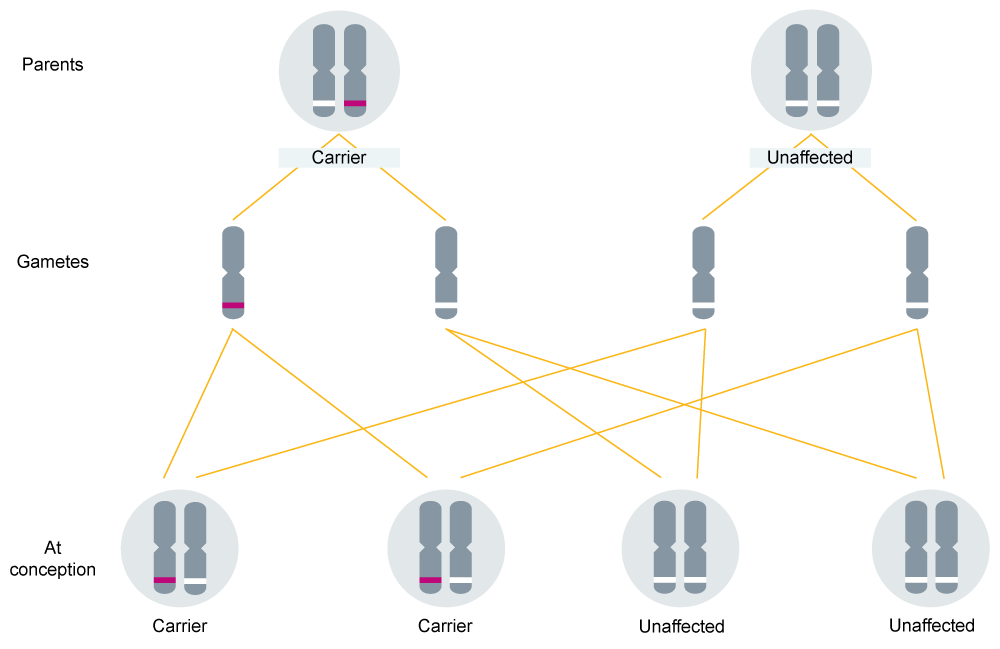Autosomal recessive inheritance
Autosomal recessive conditions are caused by pathogenic variants in both copies of a gene on one of the 22 autosomal chromosomes. The condition presents in the homozygous or compound heterozygous state.
What is an autosomal recessive condition?
Humans usually have two copies of each autosome, and therefore two copies of each gene. These copies are called alleles and they can be the same or different. Symptoms associated with autosomal recessive conditions present when both copies of the gene have a pathogenic variant. This can be the same pathogenic variant (homozygous state) or two different pathogenic variants (compound heterozygous state).
Which autosomal recessive variants are present can influence the development and presentation of these conditions. In addition, there may be modifying factors such as additional genetic variants and/or environmental factors.
An affected individual has pathogenic variants in both copies of the gene, whereas individuals with one variant and one non-pathogenic (or ‘wild type’) copy of the gene are unaffected and are called ‘carriers’ of the condition.
As shown in figure 1, if both parents are carriers of an autosomal recessive condition, there is a:
- 1-in-4 (25%) chance of a child inheriting both gene copies with the pathogenic variant and therefore being affected;
- 1-in-2 (50%) chance of a child inheriting one copy of the gene with the pathogenic variant and one non-pathogenic copy, and therefore being a carrier themselves; and
- 1-in-4 (25%) chance of a child inheriting both non-pathogenic copies and being neither affected nor a carrier.

Figure 1: Autosomal recessive inheritance.
Watch this short animation to see the autosomal recessive inheritance pattern in action.
Features of an autosomal recessive condition in a family
When looking at a patient’s family history, the presence of an autosomal recessive condition shows distinctive features, which can be identified by drawing a genetic family history (or pedigree) – see figure 2.
The main features of autosomal recessive inheritance include:
- males and females are affected in roughly equal proportions;
- affected individuals are usually siblings in one generation; and
- autosomal recessive disease is more common in consanguineous families (where parents have one or more ancestors in common).

Figure 2: Autosomal recessive inheritance within a family.
Compound heterozygotes
Even though both copies of the gene are altered in someone with an autosomal recessive condition, it does not need to be the same alteration in each copy.
For example, there are many different variants in the gene CFTR that can result in cystic fibrosis. Combinations of these variants can result in the condition – either having the same variant in both copies of the gene or having a different variant in each copy.
When someone has two different causal variants, this is termed compound heterozygous.
Where one parent is a carrier
As highlighted above, if both parents are carriers for the same condition, then each child has a 1-in-4 (25%) chance of inheriting two copies of the variant and therefore the condition itself.
If only one parent is a carrier, their children will not inherit the condition but will have a 1-in-2 (50%) chance of being a carrier themselves – see figure 3.

Figure 3: Autosomal recessive inheritance when one parent is a carrier.
Clinical examples
There are many known autosomal recessive conditions and likely many more not yet described. The table below lists a few of the more common autosomal recessive conditions seen in UK clinics.
| Condition | Gene(s) | Salient features |
|---|---|---|
| Cystic fibrosis | CFTR | A defect in chloride transport causes thick, sticky mucus, which obstructs the lungs and digestive system. Common presentations include failure to thrive and recurrent pulmonary infections. |
| Sickle cell anaemia | HBB | An alteration in the haemoglobin gene causes sickling of red blood cells, leading to painful crises, chronic haemolytic anaemia and severe infections. |
| Spinal muscular atrophy | SMN1 | Characterised by progressive muscle weakness owing to the degeneration of the anterior horn cells (lower motor neurons) in the spinal cord and brain cell nuclei. Extremely variable onset from before birth to early adulthood, depending on genetic variants. |
Key messages
- An autosomal recessive condition requires both copies of a gene to be altered for the condition to be present.
- The chance of a child inheriting two copies of the altered gene (and developing the condition) when both parents are carriers is 1-in-4 (25%).
- An individual is known as a carrier for a genetic condition when they have a genetic variant, but they do not have the associated condition. They can pass on this variant to their children.
Resources
For clinicians
- GeNotes: Visual communication aid: Autosomal recessive inheritance
- NHS England Genomics Education Programme: Genomics 101: Dominant, Recessive and Beyond
- NHS England: National Genomic Test Directory and eligibility criteria
For patients
- University Hospitals of Leicester NHS Trust: Autosomal recessive inheritance of genes